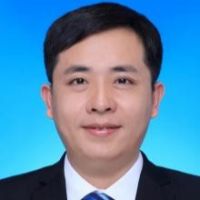Prevention and Removal Technology of Emerging Pollutants in Sewage Resource Utilization Process
A special issue of Applied Sciences (ISSN 2076-3417). This special issue belongs to the section "Environmental Sciences".
Deadline for manuscript submissions: closed (10 April 2022) | Viewed by 734
Special Issue Editors
Interests: advanced sewage treatment; sludge treatment and disposal; water quality
Special Issues, Collections and Topics in MDPI journals
Interests: wastewater treatment; ship pollution prevention; new pollution
Interests: Yellow River environment; emerging pollutant; sediment; microplastics; pollutant control
Special Issues, Collections and Topics in MDPI journals
Special Issue Information
Dear Colleagues,
More attention has been paid to emerging contaminants (ECs) due to their potential threats to human health and the ecological environment. ECs mainly include pharmaceuticals and personal care products (PPCPs), plasticizers, surfactants, and nanomaterials, etc. ECs usually circulate, migrate, or transform into other species at various environment media. What is more, ECs can also be observed in the sewage (including sludge) resource utilization process. How to efficiently remove ECs in wastewater treatment or the sewage resource utilization process should be the key concern. This Special Issue mainly focuses on the current research progress of green and recycled technologies in the prevention and removal of ECs during wastewater treatment or the sewage utilization process. The scope of interests includes, but is not limited to, the following topics:
- The circulation and migration of ECs in water or soil;
- Synthesis of green materials for application in EC removal, including adsorption material and catalytic material;
- EC migration or transformation in sewage (including sludge) treatment;
- Calculation and simulation for EC removal in the water environment.
Prof. Dr. Liangliang Wei
Prof. Dr. Wei Li
Dr. Wei Zhang
Dr. Wenbo Yu
Guest Editors
Manuscript Submission Information
Manuscripts should be submitted online at www.mdpi.com by registering and logging in to this website. Once you are registered, click here to go to the submission form. Manuscripts can be submitted until the deadline. All submissions that pass pre-check are peer-reviewed. Accepted papers will be published continuously in the journal (as soon as accepted) and will be listed together on the special issue website. Research articles, review articles as well as short communications are invited. For planned papers, a title and short abstract (about 100 words) can be sent to the Editorial Office for announcement on this website.
Submitted manuscripts should not have been published previously, nor be under consideration for publication elsewhere (except conference proceedings papers). All manuscripts are thoroughly refereed through a single-blind peer-review process. A guide for authors and other relevant information for submission of manuscripts is available on the Instructions for Authors page. Applied Sciences is an international peer-reviewed open access semimonthly journal published by MDPI.
Please visit the Instructions for Authors page before submitting a manuscript. The Article Processing Charge (APC) for publication in this open access journal is 2400 CHF (Swiss Francs). Submitted papers should be well formatted and use good English. Authors may use MDPI's English editing service prior to publication or during author revisions.
Keywords
- emerging contaminants
- prevention and removal
- sewage treatment
- sludge treatment
- circulation and migration
- green materials
- calculation and simulation








